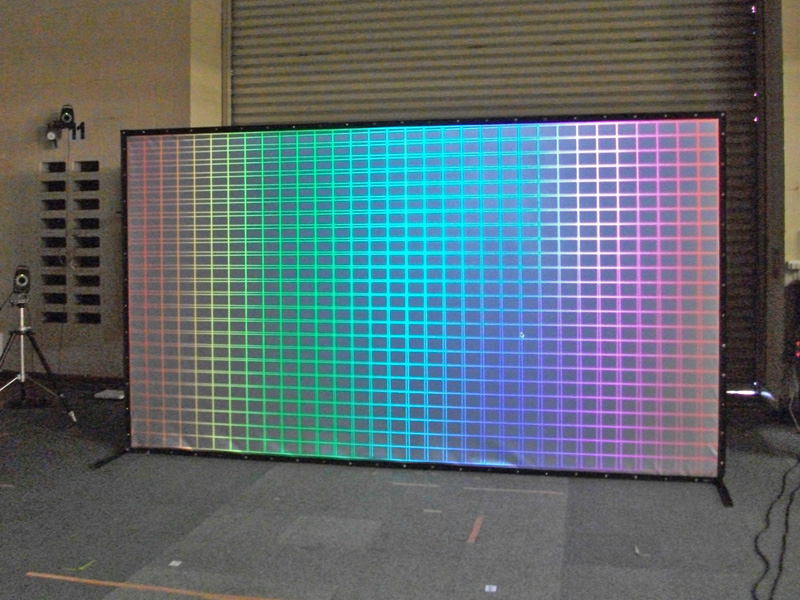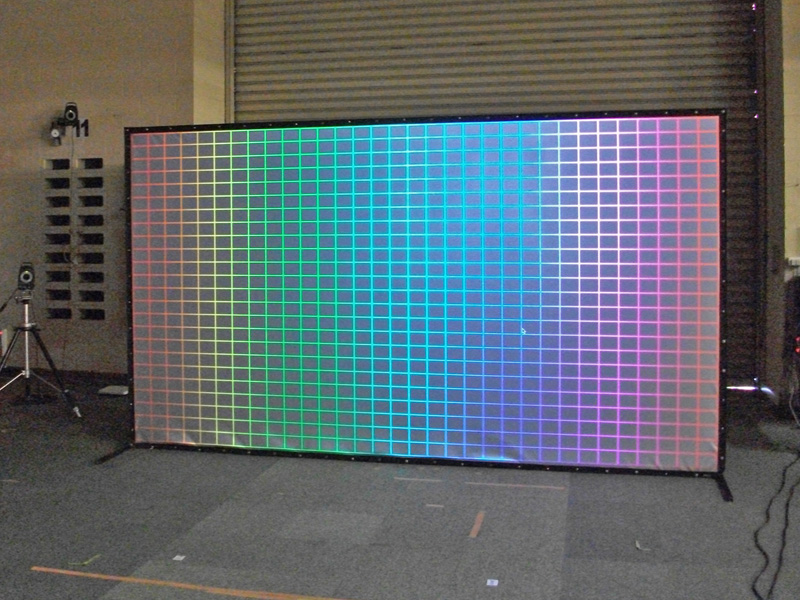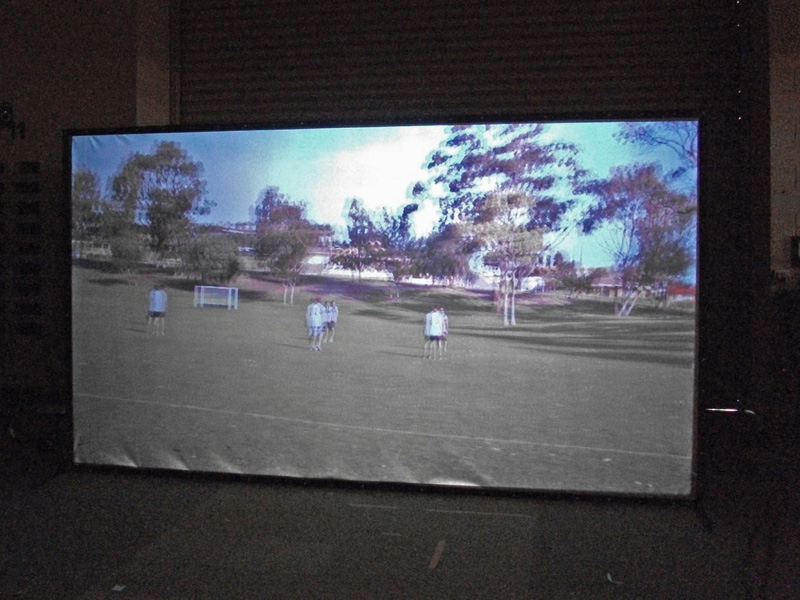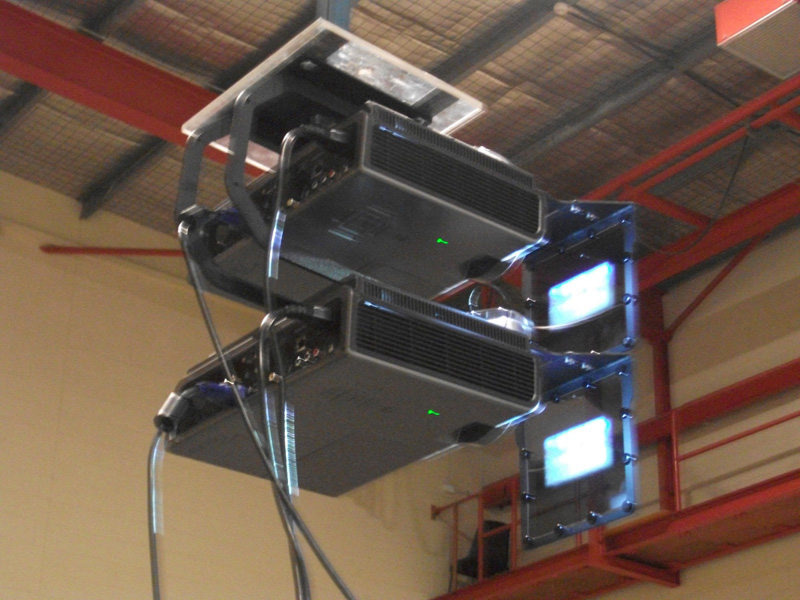Mesh alignment for stereoscopic projectionWritten by Paul BourkeNovember 2011
Stereoscopic projection requiring two projectors, such as polaroid and infitec, require that the two images align perfectly. Any misalignment will distort the depth field and increase the chance of eye-strain. Projectors with high quality (matched) optics can generally be closely aligned if they have vertical lens shift, but this can be a time consuming task and perfect alignment is not assured. Some projectors have per corner keystone but except for a few models this is normally the reserve of the higher end products. Using commodity projectors and careful mechanical alignment might result in an alignment as shown below, often much worse. 
This careful mechanical/optical alignment may be worth the effort for fixed installations but is not practical for portable or quick-setup scenarios. The approach used/proposed here is to do the alignment in software. More precisely, one plays all content back through a mesh made up of vertices and texture coordinates. The exact vertex positions of this regular mesh are the result of a software based alignment phase. During alignment one interactively moves the vertices of the corners, and optionally additionally the midpoints of the edges, until the left and right projector mesh align perfectly. This mesh is then exported and all subsequent software plays it's content through that mesh. The following is an example of the same image above after this alignment process. 
Notes

This is certainly not a new idea, using a mesh to warp geometry is fairly common in displays that require geometry correction, such as cylindrical or spherical displays. A similar process is also often used for edge-blended tiled displays, for example it was employed here at the Pausiris gallery at MONA (Museum of Old and New Art). 
|